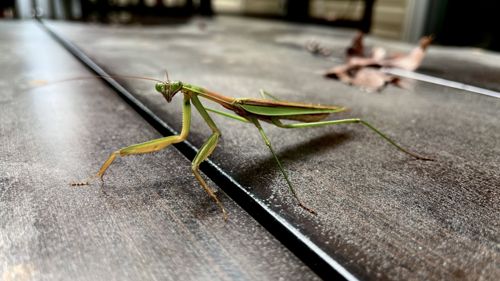Praying Mantis
Scientific Name: Mantis religiosa
Order & Family: Mantodea (Order), Mantidae (Family)
Size: Typically 5-9 cm (2-3.5 inches) in length, though some larger species can exceed 15 cm.

Natural Habitat
Gardens, meadows, grasslands, and areas with tall vegetation, often camouflaged among leaves and branches.
Diet & Feeding
Strictly carnivorous, feeding primarily on other insects such as flies, moths, crickets, and grasshoppers. Larger mantises may also prey on small vertebrates like lizards, frogs, or even small birds and rodents.
Behavior Patterns
Known for their distinctive 'praying' posture with their forelegs held as if in prayer. They are ambush predators, remaining motionless and camouflaged until prey comes within striking distance. They have excellent eyesight and a rapid strike reflex. Females are known to sometimes practice sexual cannibalism, eating the male during or after mating.
Risks & Benefits
Generally beneficial to humans as they help control populations of pest insects in gardens and agricultural fields. They pose no significant risk to humans, as they are not venomous and rarely bite, even if handled.
Identified on: 9/7/2025